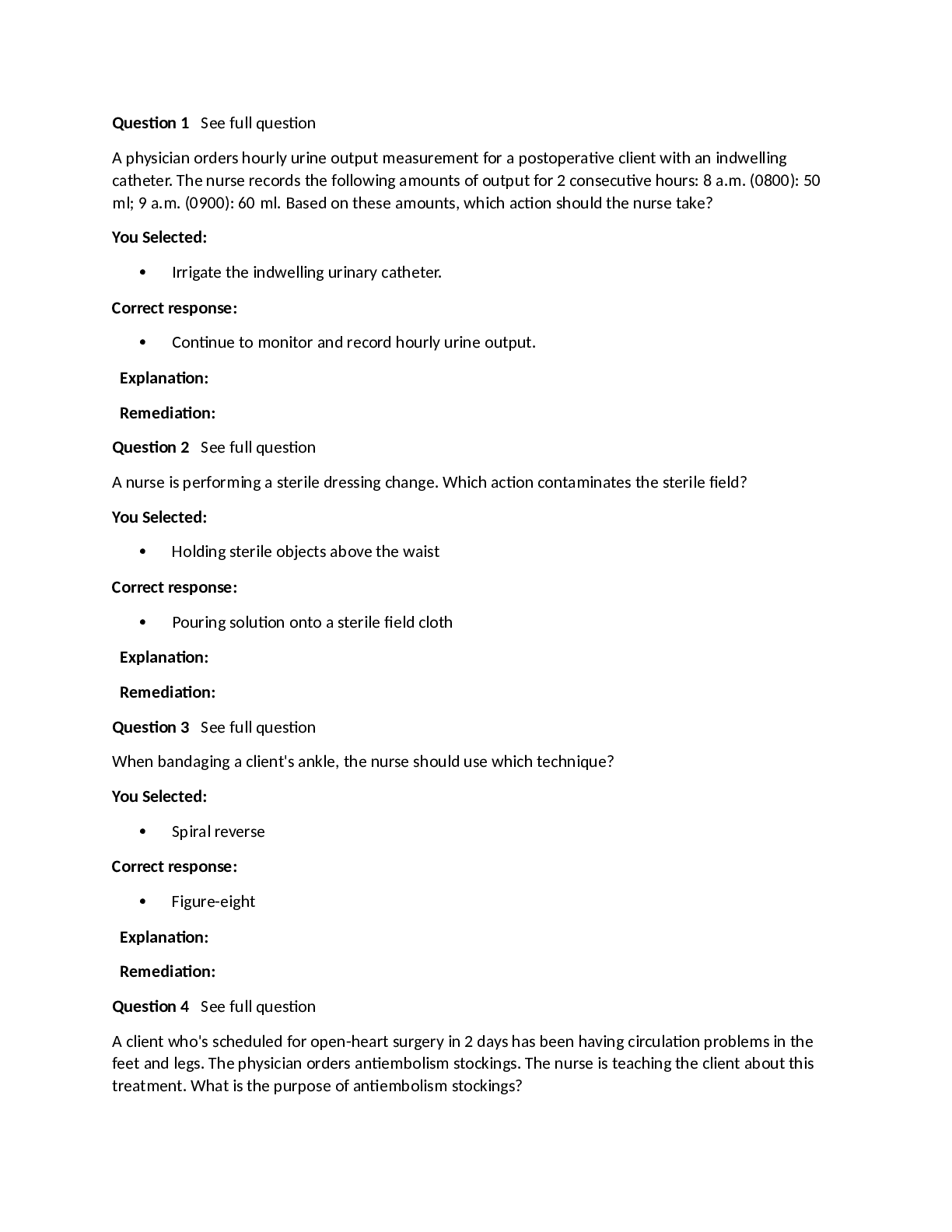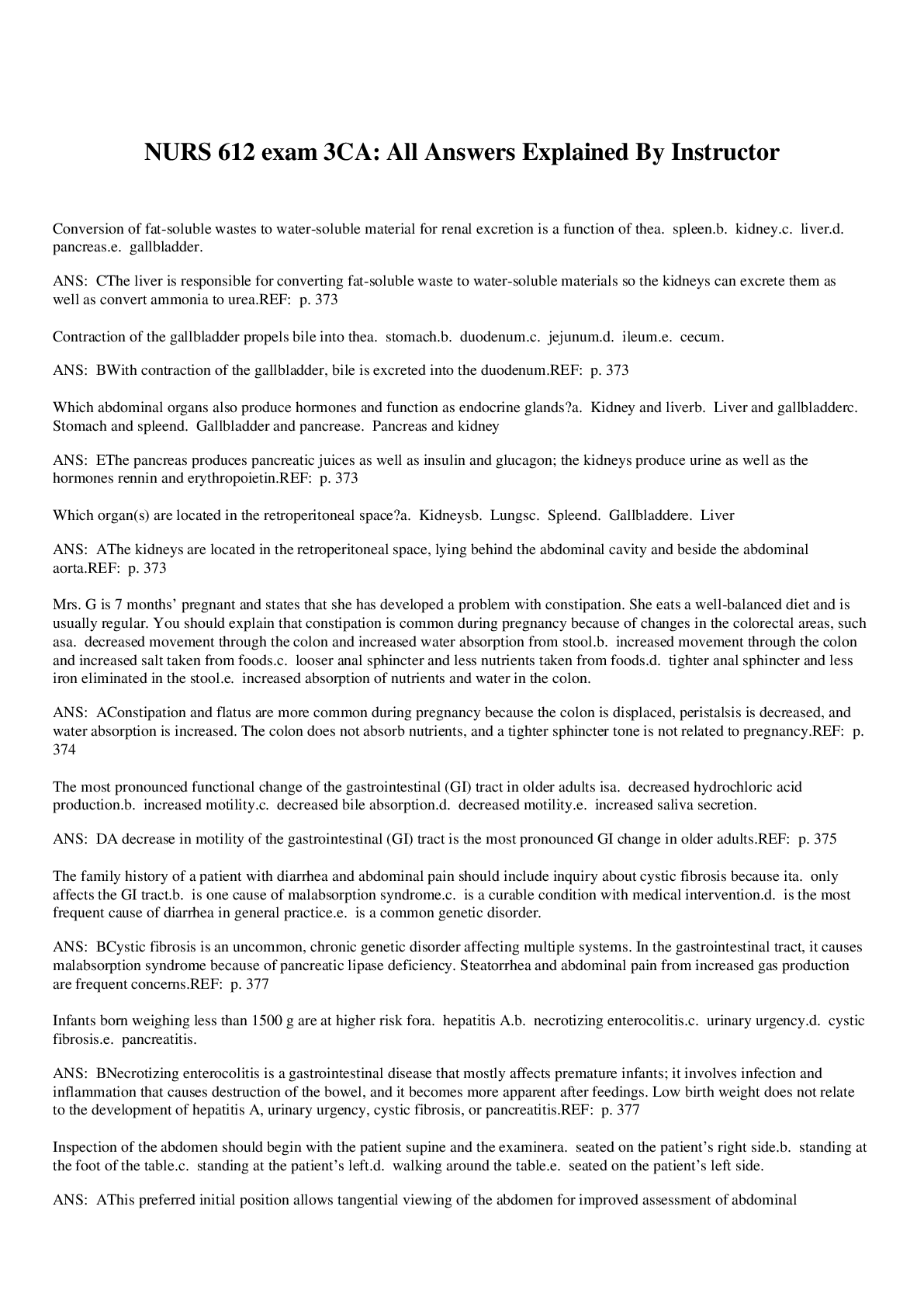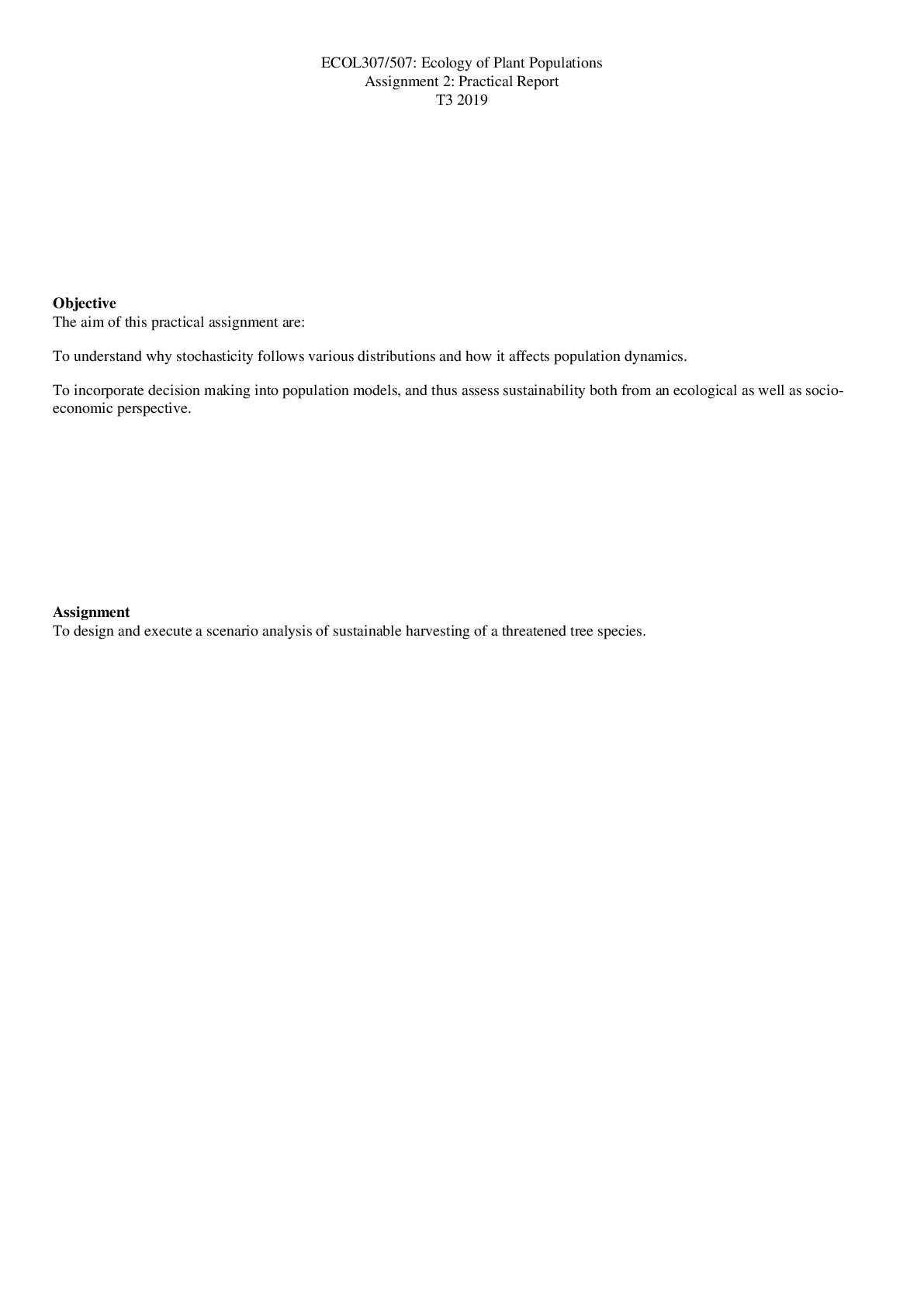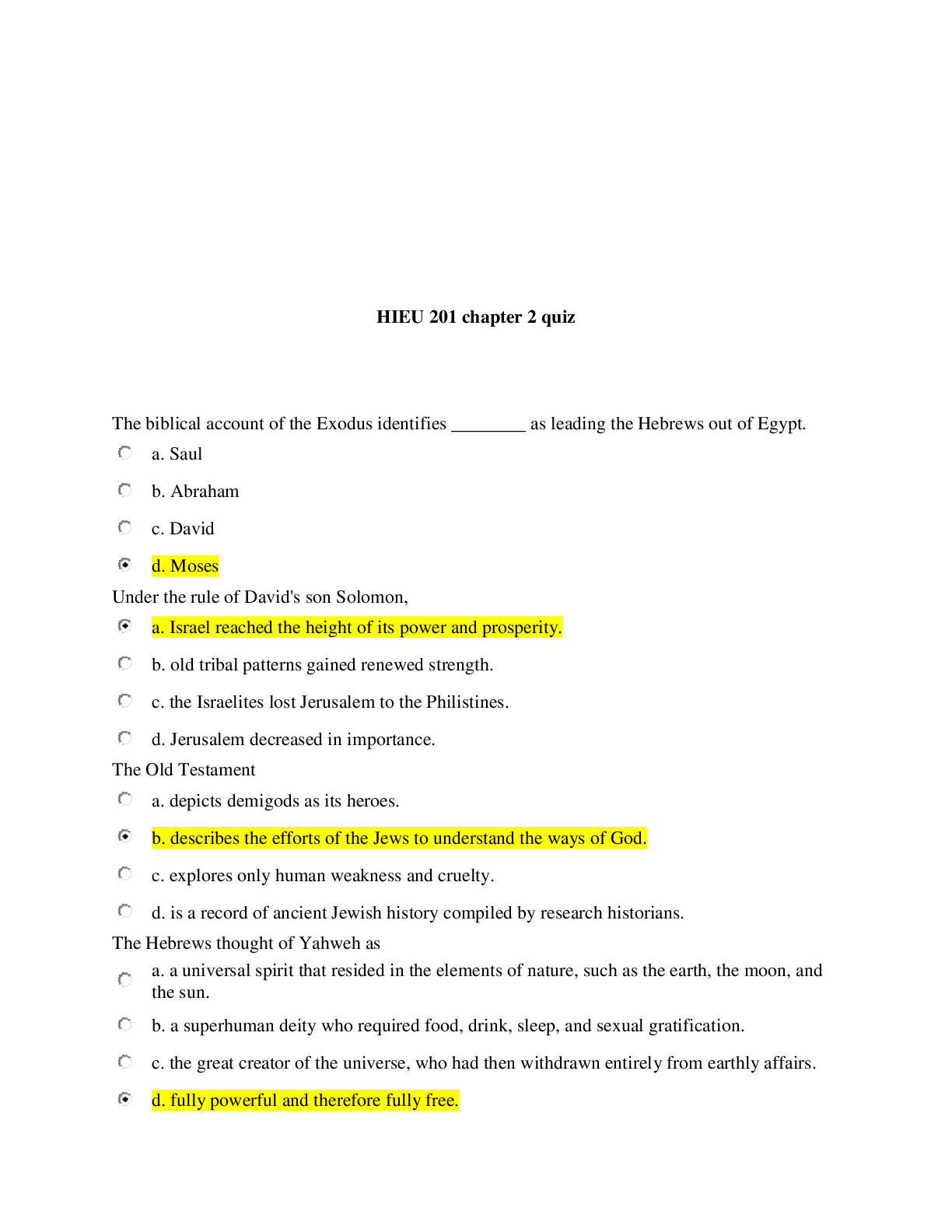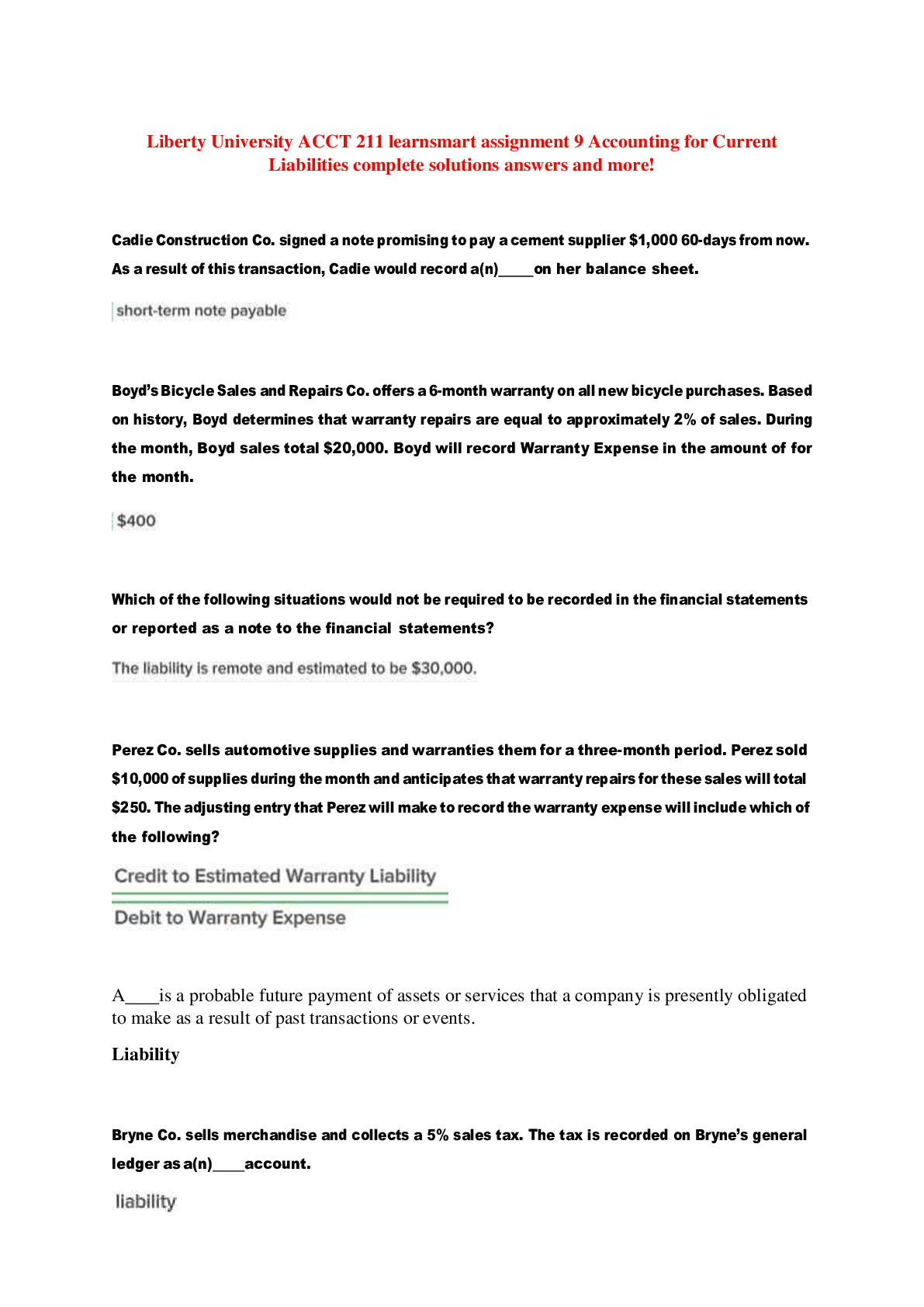Computer Networking > QUESTIONS & ANSWERS > University of DelawareCISC 650Homework1 (All)
University of DelawareCISC 650Homework1
Document Content and Description Below
R11. Suppose there is exactly one packet switch between a sending host and a receiving host. The transmission rates between the sending host and the switch and between the switch and the receiving h... ost are R1 and R2, respectively. Assuming that the switch uses store-and-forward packet switching, what is the total end-to-end delay to send a packet of length L? (Ignore queuing, propagation delay, and processing delay.) Answer: Time used to upload the packet form the end system to the router L/R1 Time used to download the packet form the end system to the router L/R2 Thus, Transmission delay=L/R1+L/R2. R12. What advantage does a circuit-switched network have over a packet-switchednetwork? What advantages does TDM have over FDM in a circuit-switched network? Answer: A circuit-switched network can guarantee a certain amount of end-to-end bandwidth for the duration of a call. Most packet-switched networks today (including the Internet) cannot make any end-to-end guarantees for bandwidth. Besides, packet-switched network use the store-and forward form, which will increase the delay of the transmission. FDM requires sophisticated analog hardware to shift signal into appropriate frequency bands.Besides,TDM increase the efficiency while transferring data cause its can adjust the division of time considering the amount data being transferred in that duration. R16. Consider sending a packet from a source host to a destination host over a fixed route. List the delay components in the end-to-end delay. Which of these delays are constant and which are variable? Answer: Transmission Delay Constant Procession Delay Constant Propagation Delay Constant Queuing Delay Variable R19. Suppose Host A wants to send a large file to Host B. The path from Host A to Host B has three links, of rates R1 = 500 kbps, R2 = 2 Mbps, and R3 = 1 Mbps. a. Assuming no other traffic in the network, what is the throughput for the file transfer? b. Suppose the file is 4 million bytes. Dividing the file size by the throughput, roughly how long will it take to transfer the file to Host B? c. Repeat (a) and (b), but now with R2 reduced to 100 kbps. Answer: a.The throughput of the link is the minimum speed of R1,R2 and R3,which is 500kbps. b.t=4millionx8/500kbps=64s c. The throughput of the link is the minimum speed of R1,R2 and R3,which is 100kbps. t=320s [Show More]
Last updated: 1 year ago
Preview 1 out of 12 pages
Instant download
.png)
Buy this document to get the full access instantly
Instant Download Access after purchase
Add to cartInstant download
Reviews( 0 )
Document information
Connected school, study & course
About the document
Uploaded On
Apr 28, 2021
Number of pages
12
Written in
Additional information
This document has been written for:
Uploaded
Apr 28, 2021
Downloads
0
Views
33

.png)


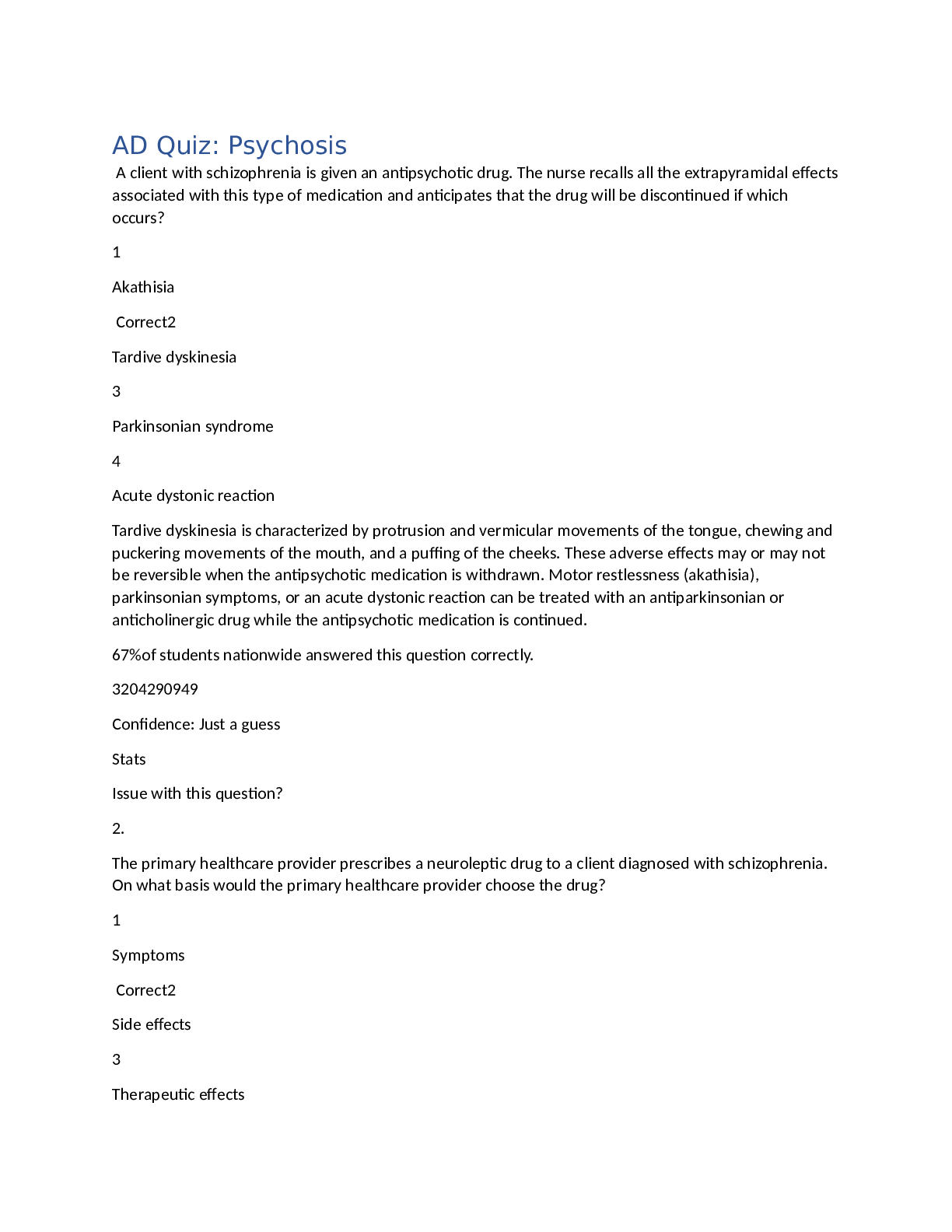
.png)
.png)
.png)
